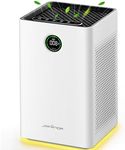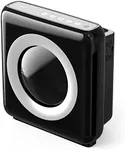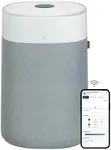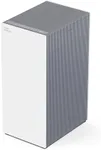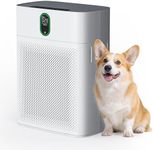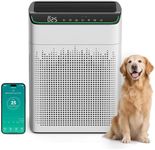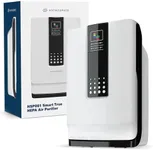Buying Guide for the Best Hepa Air Purifiers
Choosing a HEPA air purifier can make a big difference in the air quality of your home or workspace. The right model will help remove dust, allergens, smoke, and other particles from the air, making it easier to breathe and improving overall comfort. To find the best fit, it's important to understand the main features and specifications that affect performance and usability. By focusing on your room size, specific air quality concerns, and how you plan to use the purifier, you can narrow down your options and select a model that meets your needs.HEPA Filter TypeHEPA stands for High Efficiency Particulate Air, and the filter type determines how effectively the purifier can trap tiny particles. True HEPA filters capture at least 99.97% of particles as small as 0.3 microns, while HEPA-type or HEPA-like filters may not meet this standard. If you have allergies, asthma, or want the highest level of filtration, look for a purifier with a True HEPA filter. For general air cleaning, a HEPA-type filter may be sufficient, but it won't be as effective for very fine particles.
Room Coverage (Square Footage)Room coverage tells you the maximum area the purifier can effectively clean, usually measured in square feet or square meters. Small purifiers are designed for bedrooms or offices, medium ones for living rooms, and large units for open spaces or whole apartments. To pick the right size, measure your room and choose a purifier rated for at least that area. Using a purifier that's too small for your space will reduce its effectiveness.
Clean Air Delivery Rate (CADR)CADR is a measure of how quickly the purifier can clean the air of specific pollutants like dust, pollen, and smoke. Higher CADR numbers mean faster and more efficient cleaning. CADR values are usually divided into low (below 100), medium (100–200), and high (above 200). If you want quick results or have a larger room, look for a higher CADR. For smaller rooms or less urgent needs, a lower CADR may be enough.
Noise LevelNoise level, measured in decibels (dB), indicates how loud the purifier is during operation. Lower numbers mean quieter performance. Quiet purifiers (below 30 dB) are ideal for bedrooms or nurseries, while moderate noise (30–50 dB) is fine for living areas. If you are sensitive to noise or plan to use the purifier while sleeping, prioritize models with lower noise levels or a dedicated sleep mode.
Filter Replacement and MaintenanceHEPA filters need to be replaced regularly to maintain performance. Some purifiers have filter change indicators, while others require you to track usage manually. Filters can last from a few months to over a year, depending on the model and air quality. If you want low maintenance, look for purifiers with longer-lasting filters and easy access for replacement. Consider your willingness to perform regular maintenance when making your choice.
Additional Filtration (Carbon/Pre-Filters)Many HEPA purifiers include extra filters, such as activated carbon filters for odors and gases, or pre-filters to catch larger particles and extend the life of the HEPA filter. If you are concerned about smells, smoke, or chemical fumes, a model with a carbon filter is a good choice. Pre-filters are helpful if you have pets or a lot of dust, as they reduce the load on the main filter.
Smart Features and ControlsSome air purifiers offer smart features like air quality sensors, automatic mode, remote control, or app connectivity. These features can make the purifier easier to use and more responsive to changing air conditions. If you want a set-it-and-forget-it experience or like to control devices from your phone, look for models with these smart options. If you prefer simplicity, a basic manual control model may be all you need.



